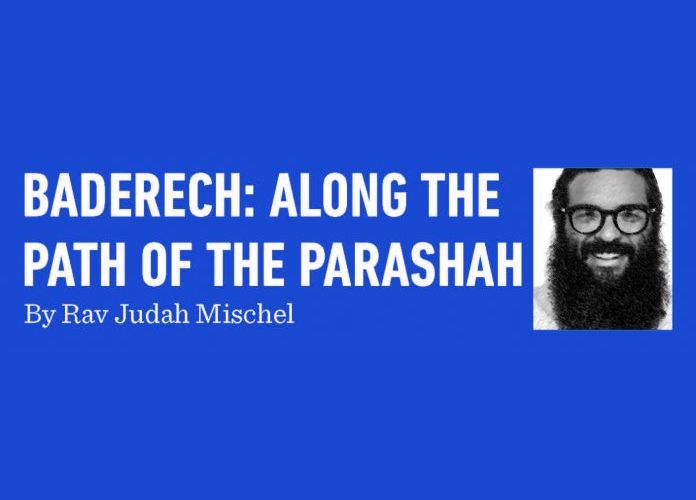Kabbalah And Holachah
By Akiva Lane
In the Temple when an animal is offered as a sacrifice, four steps are done. Shechitah (slaughtering of the animal), Kabalah (receiving the blood in a gold or silver basin), Holachah (bringing the blood to the Mizbeach, altar), and Zerikah (sprinkling the blood on the side of the Mizbeach).
I would like to focus on the middle two steps, Kabalah and Holachah, the receiving and the carrying of the blood. I would like to suggest that these steps represent the two main aspects of our lives. Kabalahrepresents who we are, our inner selves, thoughts, and feelings. When we mekabel something and let it enter our mind and heart, it enters the inner sanctum of our being. By contrast, Holachah, walking, represents our actions and social interactions with other people throughout the day.
These also represent the two main parts of Judaism: Kabbalah and Halachah. Kabbalah interacts with and influences the inner sanctum of who we are, especially how we mekabel the presence of the Almighty and let Him influence and change who we are. Halachah, on the other hand, is the compass and guide for our every step and action to make sure that everything we do is aligned with the will of the Almighty.
These ideas shine brightly in several sections of the Shema, which begins: You shall love Hashem with all Levavcha, Nafshecha, and M’odecha. It then elaborates on these words. Place these words on Levavcha: that’s Kabbalah, receiving, embracing, and feeling the presence and holiness of Hashem, experiencing His presence, His will, His love, and feeling ‘one’ with Him. Then the Shema expands on nafshecha. You shall teach your children about Hashem in your house and when you walk on the road. That’s Holachah, social interaction, moving about during the course of the day so that everything we do is guided by the Will of Hashem.
This appears again in the second paragraph of the Shema. We must love Hashem with all levavcha and nafshecha, our inner heart and social being, who we are, and what we do. Then it says we must be careful that our heart, levavcha, doesn’t go astray. It’s our inner self that can be lured away and cause us to go into exile.
The third paragraph also mentions these two aspects of ourselves. Beware not to go after your heart (levavcha) and your eyes. We aren’t tempted by our eyes when we are meditating quietly, but when we are out and about in the process of Holachah, tempted by what we see as we walk around and socialize with others. We are told to fix this problem of our wandering eyes by looking at the tzitzis, the fringes, with the knots that represent the 613 commandments of halachah.
It’s interesting that there are two situations involving the korbanos when the Kabalah of the blood is not followed by Holachah, the carrying of the blood. The first situation is if the animal is sacrificed right next to the Mizbeach, the altar. Then the Kabalah of the blood is immediately followed by the Zerikah, the sprinkling of the blood. In this case, there is no Holachah, carrying of the blood, because the Kohen is standing right next to the Mizbeach. One lesson we can learn from this is that if a person is so intensely close to Hashem, and his whole being is ablaze feeling the Will and Presence of Hashem, the step of Holachah is just not involved. We feel so close to Hashem and our soul completely embraces the presence of Hashem, that the step of Holachah just doesn’t come into play.
The second scenario when Holachah is muted is on the afternoon of Passover, when all the Jewish people offer their Korban Pesach. The Kohanim would form many lines, each line starting where a sheep or goat was shechted. The first Kohen on each line received (Kabalah) the blood into a gold or silver bowl, after which he would pass it to the next Kohen in line, who then passed it to the next Kohen and so forth. The last Kohen who is right next to the Mizbeach did the Zerikah, sprinkling the blood onto the side of the Mizbeach. In this situation, also, there was a minimum of Holachah and an abundance of Kabalah. Each Kohen in line mekabels the blood from the Kohen before him, who then passed the bowl to the next Kohen, who mekabels it from him.
Why is there no Holachah in this situation also? Perhaps the lesson at that moment was that all the Jews were united, intensely performing not only the will of Hashem, but also what was needed by all of Klal Yisraelto enable the Jews to have their Korban Pesach, one of the only two acts that if not done is chayav karet. During the intense unity of the lines of Kohanim working together to fulfill the will of Hashem and their fellow Jews, the Kabalah takes center stage. It’s almost a re-enactment of another Kabalah: the Kabbalah of receiving the Torah at Har Sinai, when all the Jews were Am Echad b’Lev Echad. At that moment, the Holachah was not as important as the Kabalah because the act of receiving was so powerful, so intense, and so central, it was like the metaphor of a wedding, when the Jewish people received the Torah and were thus united in matrimony with Hashem.













